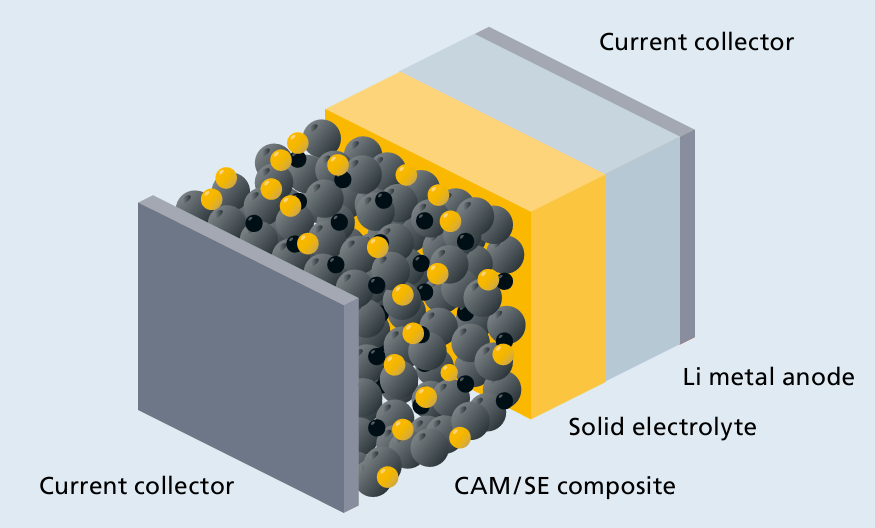As Glaciers Melt, the Earth’s Cryosphere Is on Thin Ice – Inside Climate News

Report on the State of the Cryosphere and its Implications for Sustainable Development Goals
Introduction
This report summarizes the critical state of the Earth’s cryosphere—its frozen regions—as presented by scientists at the 30th United Nations climate conference (COP30). Based on findings from the International Cryosphere Climate Initiative (ICCI) and insights from glaciologist Miriam Jackson, this analysis highlights the accelerated melting of glaciers and its profound impact on the achievement of multiple Sustainable Development Goals (SDGs), particularly those related to climate, water, and sustainable communities.
Cryosphere Degradation: Current Status and Projections
The cryosphere is responding to climate change at an alarming rate, with significant consequences for global environmental stability. The ICCI has issued stark warnings regarding the future of global ice reserves.
Key Scientific Findings
- Accelerated Mass Loss: Since the year 2000, many of the world’s glaciers have lost 20% or more of their total mass. This rate of loss is unsustainable and has already resulted in the complete disappearance of glaciers in nations such as Venezuela and Slovenia.
- Vulnerable Regions: Tropical glaciers, located at high elevations in regions like Peru, Bolivia, Ecuador, and Africa, are melting more rapidly than the global average. Other severely affected areas include the European Alps, parts of Norway, and Svalbard.
- Future Projections: A global temperature increase of 2°C is projected to cause the near-total loss of ice in the European Alps, the Rockies of North America, Iceland, and Scandinavia. Current warming trajectories indicate this threshold may be exceeded.
Impacts on Sustainable Development Goals (SDGs)
The decline of the cryosphere directly undermines progress towards several key SDGs. The interconnected nature of climate and development means that glacial melt has far-reaching social, economic, and environmental consequences.
SDG 13: Climate Action
The melting cryosphere is both a symptom and a driver of climate change, creating a feedback loop that jeopardizes SDG 13.
- Albedo Effect: The loss of reflective white sea ice exposes darker ocean surfaces, which absorb more solar radiation. This accelerates global warming, making it more difficult to achieve the goals of the Paris Agreement.
- Urgency for Policy: The rapid changes underscore the need for immediate and ambitious climate action from all nations, a central objective of COP negotiations.
SDG 6: Clean Water and Sanitation
Glacial meltwater is a critical freshwater source for billions of people, and its decline presents a severe threat to water security.
- Water Scarcity: Communities in the Hindu Kush Himalaya and arid regions of Central Asia are heavily dependent on glacier melt for agriculture, hydropower, and domestic water supply. The diminishing ice reserves threaten these essential resources.
- Impact on Livelihoods: Reduced water availability directly impacts food production and energy generation, affecting progress towards SDG 2 (Zero Hunger) and SDG 7 (Affordable and Clean Energy).
SDG 11: Sustainable Cities and Communities
The consequences of cryosphere melt pose direct risks to the safety and sustainability of human settlements, particularly in coastal and mountain regions.
- Sea-Level Rise: Melt from mountain glaciers is a significant contributor to global sea-level rise, threatening the existence of low-lying island nations and coastal communities worldwide.
- Natural Hazards: Melting glaciers increase the risk of hazards such as glacial lake outburst floods (GLOFs), which can have devastating impacts on downstream communities, as observed in countries like Tajikistan, Nepal, and Bhutan.
SDG 10: Reduced Inequalities
The impacts of cryosphere melt are not distributed equally, exacerbating existing global inequalities.
- Climate Injustice: Low-lying island states and developing mountain nations, which have contributed least to greenhouse gas emissions, are among the most vulnerable to the consequences. This highlights the challenge of climate justice central to SDG 10.
- Disproportionate Burden: These nations face existential threats from sea-level rise and water scarcity, while often lacking the resources for adaptation, leading to potential displacement and migration.
Challenges in Global Climate Negotiations at COP30
At COP30, scientists and representatives from vulnerable nations are advocating for stronger commitments based on the scientific evidence of cryosphere collapse. However, significant political and economic barriers remain.
Objectives of the Scientific Community
- To ensure negotiators have access to and understand the latest scientific facts regarding the cryosphere.
- To advocate for the inclusion of strong, science-based language regarding the cryosphere in official COP texts.
- To communicate the global interconnectedness of cryosphere changes, emphasizing that impacts like sea-level rise and altered weather patterns affect all nations.
Divergent National Positions
- Vulnerable Nations: Countries like Tajikistan, Nepal, and the coalition of low-lying island states are expressing extreme urgency, as they are already experiencing fatal floods and face existential threats.
- Fossil Fuel Exporters: Some oil-exporting nations demonstrate reluctance to acknowledge the urgency, prioritizing economic interests derived from fossil fuels over the global imperative for climate action. This division presents a major obstacle to achieving a consensus that aligns with the survival needs of the most affected populations and the broader goals of sustainable development.
Analysis of Sustainable Development Goals in the Article
1. Which SDGs are addressed or connected to the issues highlighted in the article?
-
SDG 13: Climate Action
- The entire article is centered on the impacts of climate change, specifically the “alarming state of the cryosphere.” It discusses the consequences of global warming, such as the prediction that the “European Alps, Rockies… Iceland, and Scandinavia would lose nearly all ice at 2 degrees Celsius of warming.” The presence of scientists at the “30th United Nations climate conference (COP30)” to communicate these facts directly addresses the global effort to combat climate change.
-
SDG 6: Clean Water and Sanitation
- The article highlights the critical role of glaciers as a freshwater source. It states that people in “high mountain areas, who use the water for melting glaciers for water supply” are immediately impacted. It specifically mentions that communities in “Hindu Kush Himalaya… Central Asia and northern Pakistan” depend on this meltwater for survival, connecting the issue directly to water resources and scarcity.
-
SDG 11: Sustainable Cities and Communities
- The impacts of melting glaciers on human settlements are a key theme. The article mentions hazards like “glacial outburst floods” that have caused “deaths” in countries like Tajikistan, Nepal, and Bhutan. Furthermore, the resulting “sea level rise… affects everybody living in coastal communities, or on low-lying islands,” threatening the safety and sustainability of these settlements.
-
SDG 1: No Poverty
- The article connects climate impacts to the vulnerability of populations. It notes that “low-lying island states… have contributed the least to climate change but they’re some of the ones who are suffering the most.” It also describes a situation where people are “migrating because where they live, they can no longer survive,” linking climate change directly to existential threats that exacerbate poverty and inequality.
-
SDG 14: Life Below Water
- The article explicitly links melting land ice to the oceans, stating that “mountain glaciers… are already causing a sea level rise.” This rise directly threatens “coastal communities” and “low-lying islands,” impacting coastal ecosystems which are the focus of SDG 14.
-
SDG 17: Partnerships for the Goals
- The context of the article is the COP30 climate conference, a global partnership aimed at addressing climate change. The role of the International Cryosphere Climate Initiative is to “communicate information about the cryosphere” and “make sure that the negotiators understand the science.” This effort to inform policy and foster international cooperation exemplifies the spirit of SDG 17.
2. What specific targets under those SDGs can be identified based on the article’s content?
-
SDG 13: Climate Action
- Target 13.1: Strengthen resilience and adaptive capacity to climate-related hazards and natural disasters. This is relevant as the article discusses the need to address “hazards like floods” and the concerns of countries like “Tajikistan, Nepal and Bhutan” who have “seen deaths from these glacial outburst floods.”
- Target 13.3: Improve education, awareness-raising and human and institutional capacity on climate change mitigation, adaptation, impact reduction and early warning. The work of Miriam Jackson and her colleagues at COP30 is a direct example of this target in action, as they are there to “communicate information about the cryosphere” and “make sure that the negotiators understand the science.”
-
SDG 6: Clean Water and Sanitation
- Target 6.4: Substantially increase water-use efficiency and ensure sustainable withdrawals and supply of freshwater to address water scarcity. The article’s focus on the dependency of communities in “arid regions, certain parts of Central Asia and northern Pakistan” on glacier water, which is now threatened, directly relates to the need for sustainable water supply.
-
SDG 11: Sustainable Cities and Communities
- Target 11.5: Significantly reduce the number of deaths and people affected by disasters, including water-related disasters. This target is directly addressed by the mention of “deaths from these glacial outburst floods” and the existential threat of sea-level rise to “coastal communities, or on low-lying islands.”
-
SDG 1: No Poverty
- Target 1.5: Build the resilience of the poor and those in vulnerable situations and reduce their exposure and vulnerability to climate-related extreme events. The article highlights the plight of “Low-lying island states” who are “suffering the most” and people who are “migrating because where they live, they can no longer survive,” which aligns perfectly with this target.
3. Are there any indicators mentioned or implied in the article that can be used to measure progress towards the identified targets?
-
Rate of Glacier Mass Loss
- The article provides a specific metric: “Since 2000, many of them have lost 20 percent of their mass, some of them even more.” This is a direct indicator of the physical impact of climate change on the cryosphere (relevant to SDG 13).
-
Global Temperature Increase
- The article uses temperature as a critical threshold, warning that major glacier systems “would lose nearly all ice at 2 degrees Celsius of warming.” This is a key indicator for measuring progress on global climate goals (SDG 13).
-
Number of Disappeared Glaciers
- A stark, qualitative indicator is mentioned: “Some have already disappeared; Venezuela and Slovenia lost their last glaciers quite recently.” This serves as an irreversible milestone of climate impact (SDG 13).
-
Rate of Sea Level Rise
- The article states that melting glaciers are “already causing a sea level rise.” While a specific rate isn’t given, the phenomenon itself is identified as a key impact indicator affecting coastal communities (SDG 11, SDG 14).
-
Frequency and Impact of Climate-Related Disasters
- The text implies this indicator by mentioning that countries “might have seen deaths from these glacial outburst floods.” Tracking the number of such events and the resulting casualties would measure the impact on community safety (SDG 11.5).
-
Inclusion of Scientific Data in Policy Texts
- An indicator for progress in partnerships and policy is implied by the statement: “We’re working hard to get it in the text.” The successful integration of cryosphere science into official climate agreements would be a measurable outcome (SDG 13.3, SDG 17).
4. Table of SDGs, Targets, and Indicators
| SDGs | Targets | Indicators |
|---|---|---|
| SDG 13: Climate Action |
13.1: Strengthen resilience to climate-related hazards.
13.3: Improve education and awareness on climate change. |
|
| SDG 6: Clean Water and Sanitation | 6.4: Ensure sustainable withdrawals and supply of freshwater. |
|
| SDG 11: Sustainable Cities and Communities | 11.5: Reduce deaths and people affected by disasters. |
|
| SDG 1: No Poverty | 1.5: Build the resilience of the poor and reduce their vulnerability to climate-related events. |
|
| SDG 14: Life Below Water | 14.2: Protect marine and coastal ecosystems. |
|
| SDG 17: Partnerships for the Goals | 17.16: Enhance the global partnership for sustainable development. |
|
Source: insideclimatenews.org
What is Your Reaction?
 Like
0
Like
0
 Dislike
0
Dislike
0
 Love
0
Love
0
 Funny
0
Funny
0
 Angry
0
Angry
0
 Sad
0
Sad
0
 Wow
0
Wow
0


















































.jpg.webp?itok=0ZsAnae9#)





/environment-climate-change-and-health-(ech)/water-sanitation-hygiene-and-health-(wsh)/landfill-tuvalu-36092.tmb-1200v.jpg?sfvrsn=5c21fe40_1#)

















